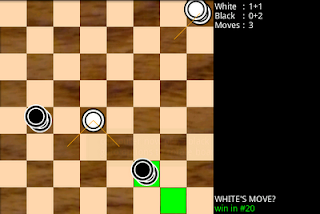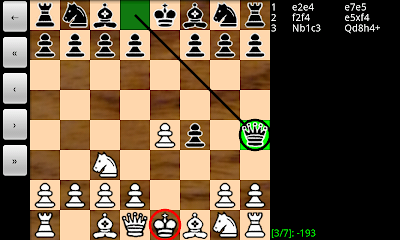BikMove v1.2
Continuing the detour in checkers. I also released v1.2 of BikMove , a checkers engine plugin to Martin Fierz' CheckerBoard application. New features include: Added internal iterative deepening to search Configurable transposition table and endgame database cache Improved evaluation function Avoid querying Fierz's database when *either* side can capture Below are results of a 3-move openings match between BikMove v1.2 and other engines (1 second-per-move, 256MB hash, 256MB database cache, 2-8 piece endgames, best-move for engines that have their own book). BikMove v1.2 vs. Easy Checkers 1.0 : W-L-D: 284- 0- 4 99% BikMove v1.2 vs. Simple Checkers 1.14: W-L-D: 136- 21-131 70% BikMove v1.2 vs. GUI checkers 1.05+ : W-L-D: 9-108-171 33% BikMove v1.2 vs. Cake1.8 + huge book : W-L-D: 0-152-136 24% BikMove v1.2 vs. Kingsrow 1.16d : W-L-D: 1-181-106 19% For comparison, also some results under similar conditions with v1.1. BikMove v1.1 vs. Simple Check









